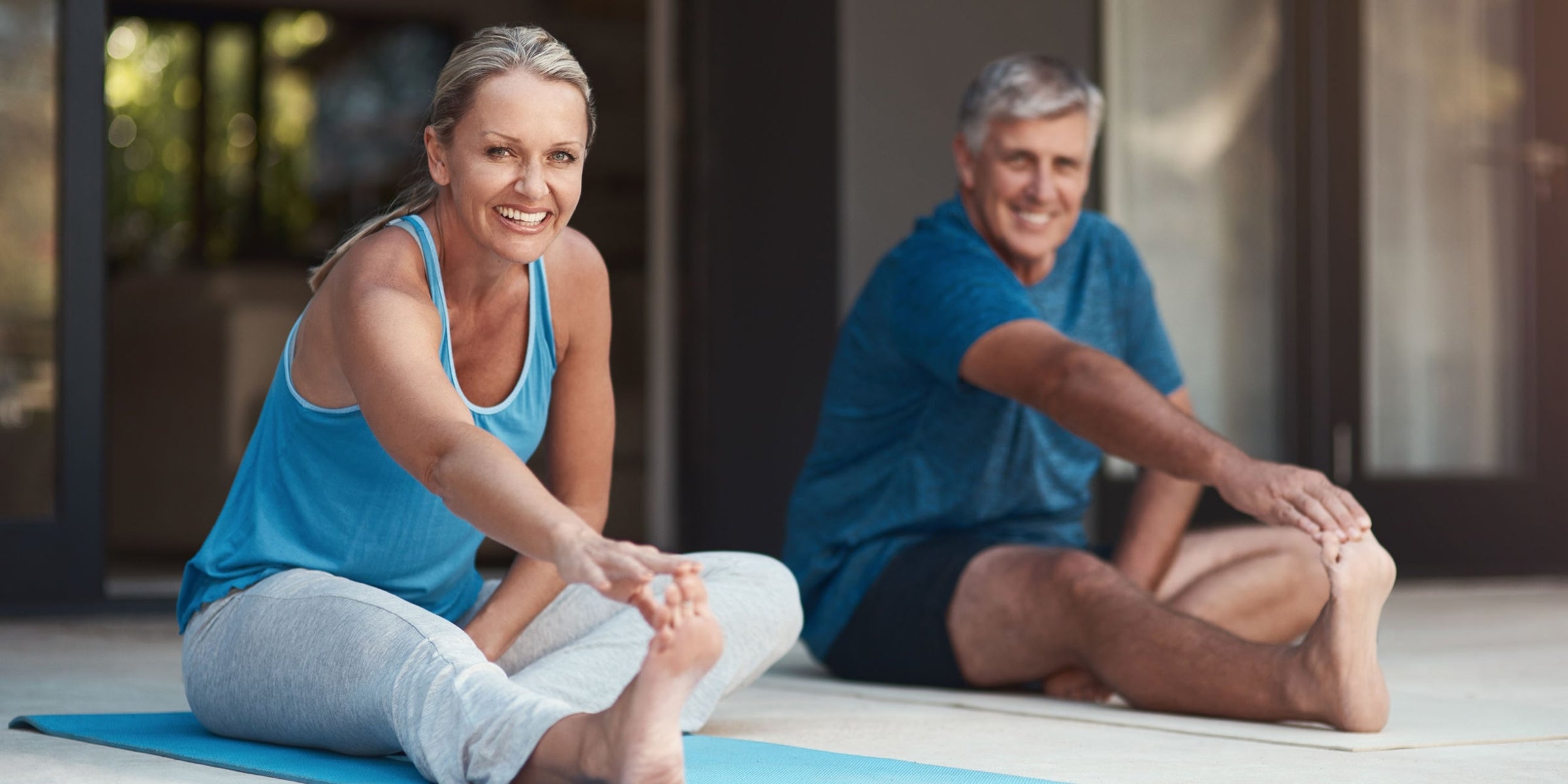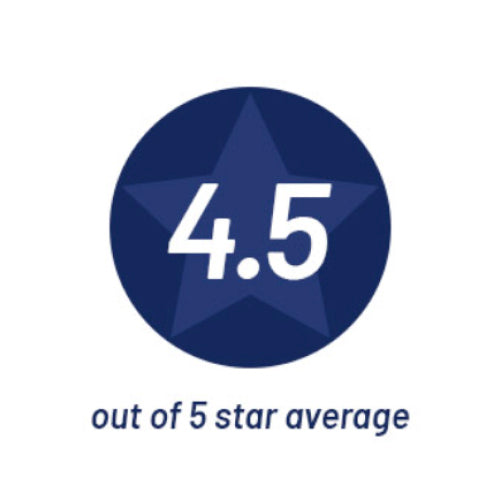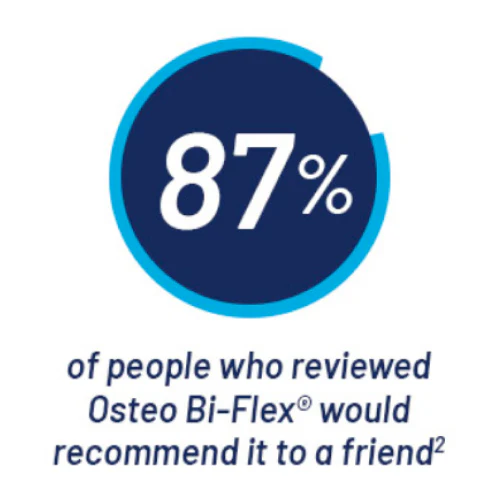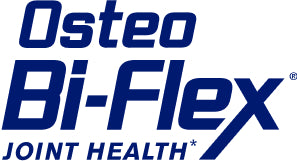
Health Benefits of Yoga and How It Can Help with Arthritis
Salutations. It’s more than a formal greeting. In yoga, it is the practice of honoring the sun. Sun Salutations, or Surya Namaskar, is one of the most revered sequences in yoga, which originated in India over 5,000 years ago. Surya — the Hindi word for the sun, our primary source of light and closest star — was held in awe as both the physical and spiritual heart of our world. Namaskar comes from the root of namar or “to bow.” You’re likely familiar with the similar word, Namaste, where the suffix –te means to you. If this sounds a bit hippy dippy to you, well, yoga is indeed brimming in fascinating symbolism and rich mythical lore, but it is also abundant in health benefits.
Why Practice Yoga?
Yoga has consistently shown to be a positive habit. In our world of buzzing phones, fast-paced news cycles, deadlines and noise, taking time to breathe and connect with your body is not just a logical choice, but a healthy way to lower stress. Stress can be the culprit of countless ailments and have negative effects on the body mentally and physically. When you’re feeling anxious, it helps to take a few deep breaths to calm down, right? Consider yoga as an amplified version of this method toward calm. Slow and fluid movements while breathing deeply help connect you to how your body feels; it allows you to tune into yourself and find what’s off balance and ease away that pain, be it physical or emotional.
Yoga as Exercise
As we age, it’s important to find exercises we enjoy that suit our abilities. Yoga is a low-impact method to improve fitness for both your body and your mind. And, if you experience pain in the process, our Osteo Bi-Flex® Pain Relieving Cream is there to work on contact to temporarily ease away muscle soreness after light or moderate activity.
What Yoga Does For Your Body: Top 5 Benefits
The overarching benefit of yoga is that it can improve your health in addition to numerous other benefits. As it is a series of poses that allow you to stretch the muscles you use every day, plus the ones you don’t, it can greatly increase flexibility.
Yogis aim to breathe deeply while holding a pose for a few seconds to a few minutes. That time allows your muscles to slowly stretch and loosen. If you’re consistent in getting on the mat, you’ll notice a gradual ease in what used to be uncomfortable positions. When we stretch, we are lengthening the fibers of our muscles — pulling muscles to their full length — which helps realign those fibers and release tension. Tight muscles can affect different areas of the body. If you recall that elementary school song hip bone connected to the thigh bone, well it’s a great way to understand how one discomfort begets another. For example, the Iliotibial Band (ITB) runs from the butt to the knees, and tightness in that muscle can cause knee pain. Certain yoga poses, such as the Warrior II pose, open the hip abductors to stretch muscles around the hip, alleviating strain on the knee.
Then comes muscle strength. The plank pose, for example, has the incredible power of strengthening the arms, chest and abdominals. That’s right, all that in one pose. We admit, it’s a toughie and takes time to increase your stamina to hold the plank, but once you’re focused into your practice, whew, get ready to feel a sense of accomplishment.
Furthermore, yoga helps improve and even correct your posture. Your back and neck muscles support your head, but slumping over a phone or keyboard strains those muscles and can potentially degenerate the spine. Meanwhile, the Mountain, Cat Cow, Downward Dog, Cobra and other poses help regain alignment in the neck and back. And speaking of the back, the bends and twists of yoga practice bring synovial fluid to the disks, helping to keep your spine moving smoothly along with you.
One of the pillars of yoga is that everything is connected. With flexibility comes improved muscle strength. From that strength comes improved posture and lowering stress. And from these betterments, your immune system can also benefit, too. Ever notice people tend to catch a cold when life is at its busiest? Research shows bacteria and viruses can quietly lurk in your system. When we overextend ourselves and don’t get enough sleep or eat poorly, those maladies can attack. Yoga helps decrease stress hormones and opens the respiratory tract which simulates the lymphatic system (an important part of your immune system) and pushes out toxins bringing oxygen to the blood. It’s quite spectacular how the body functions and responds to yoga.
And the cherry on top of this positive vibe fest? Better sleep. It’s true – numerous studies show lowering stress hormones and tension in the body through yoga promotes improved sleep. The National Sleep Foundation states that people over 60 who regularly practice yoga, “experience better sleep quality, sleep for longer, and feel better during the day.” A nagging ache can surely keep you awake if it’s uncomfortable enough, and yoga, in all its goodness of improving flexibility, can mitigate that discomfort by releasing tension in the muscles and joints for a more restful sleep.
Yoga for Arthritis: Maintaining Healthy Joints
Increasing flexibility alleviates stiffness, while strengthening muscles protects your bones and joints. This translates seamlessly for those with arthritis. Scientific studies show people who suffer from arthritis and regularly practice yoga can enjoy reduced joint pain, improved joint flexibility and function. Participants who committed to just 90-minutes of yoga per week noticed a significant improvement in joint stiffness as well as reductions in pain. But, perhaps you’re thinking of the condition of your knees and feel yoga with all of its poses on the floor would be unfathomable. For those with knee issues, many movements can be modified using a chair. You can utilize foam blocks specifically designed to support you in your practice, and other aids to help you balance while doing yoga. When experiencing an arthritis flareup, aim to continue moving. Of course never over do it — tune into how your body feels and notice when you’re doing too much — but because you were Made to Move, activity lends itself to maintaining flexibility in the joints. Tuning in helps to pinpoint the source and relax the pain. Don’t forget, between those good sessions on the yoga mat, complete your routine with Osteo Bi-Flex® Pain Relieving Cream. Its cooling menthol target sore muscles and tender joints on contact when you need it most.
Yoga is for everyone and gentle enough to do every day. It’s not a competition and should never hurt. Be kind to yourself and explore the possibilities of finding your breath, connecting to your body and improving your flexibility and joint function. Namaste.












